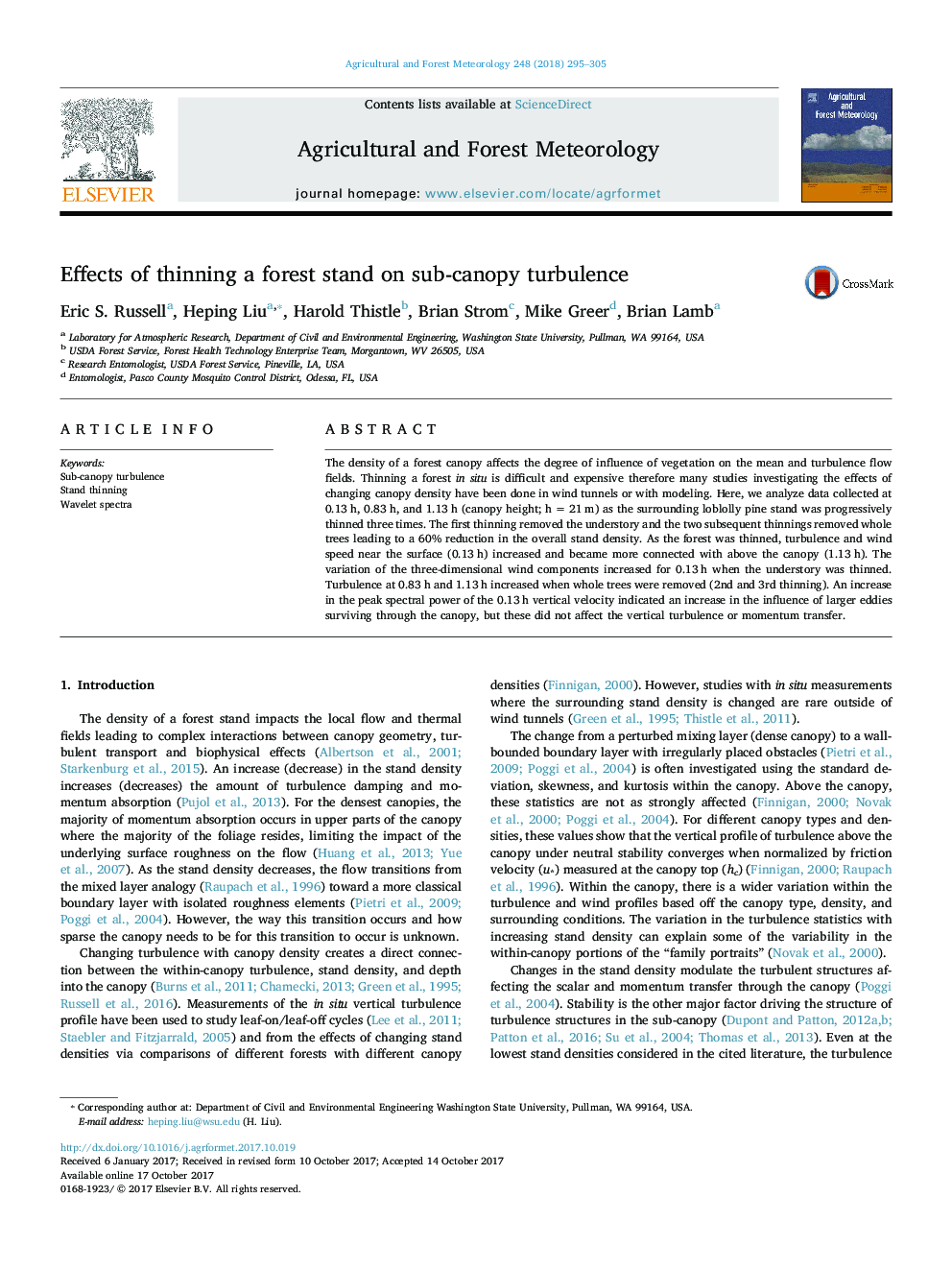| Article ID | Journal | Published Year | Pages | File Type |
|---|---|---|---|---|
| 4758883 | Agricultural and Forest Meteorology | 2018 | 11 Pages |
Abstract
The density of a forest canopy affects the degree of influence of vegetation on the mean and turbulence flow fields. Thinning a forest in situ is difficult and expensive therefore many studies investigating the effects of changing canopy density have been done in wind tunnels or with modeling. Here, we analyze data collected at 0.13 h, 0.83 h, and 1.13 h (canopy height; h = 21 m) as the surrounding loblolly pine stand was progressively thinned three times. The first thinning removed the understory and the two subsequent thinnings removed whole trees leading to a 60% reduction in the overall stand density. As the forest was thinned, turbulence and wind speed near the surface (0.13 h) increased and became more connected with above the canopy (1.13 h). The variation of the three-dimensional wind components increased for 0.13 h when the understory was thinned. Turbulence at 0.83 h and 1.13 h increased when whole trees were removed (2nd and 3rd thinning). An increase in the peak spectral power of the 0.13 h vertical velocity indicated an increase in the influence of larger eddies surviving through the canopy, but these did not affect the vertical turbulence or momentum transfer.
Related Topics
Physical Sciences and Engineering
Earth and Planetary Sciences
Atmospheric Science
Authors
Eric S. Russell, Heping Liu, Harold Thistle, Brian Strom, Mike Greer, Brian Lamb,
